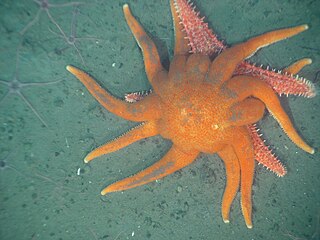
The Valvatida are an order of starfish in the class Asteroidea, which contains 695 species in 172 genera in 17 families.

Linckia laevigata is a species of sea star in the shallow waters of tropical Indo-Pacific.

The Ophidiasteridae are a family of sea stars with about 30 genera. Occurring both in the Indo-Pacific and Atlantic Oceans, ophidiasterids are greatest in diversity in the Indo-Pacific. Many of the genera in this family exhibit brilliant colors and patterns, which sometimes can be attributed to aposematism and crypsis to protect themselves from predators. Some ophidiasterids possess remarkable powers of regeneration, enabling them to either reproduce asexually or to survive serious damage made by predators or forces of nature. Some species belonging to Linckia, Ophidiaster and Phataria shed single arms that regenerate the disc and the remaining rays to form a complete individual. Some of these also reproduce asexually by parthenogenesis.

The Asterinidae are a large family of sea stars in the order Valvatida.

Nardoa is a genus of sea stars in the family Ophidiasteridae.
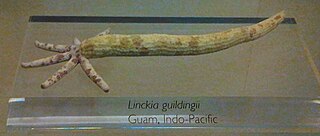
Linckia guildingi, also called the common comet star, Guilding's sea star or the green Linckia, is a species of sea star reported from the shallow waters of the tropical Pacific Ocean, Indian Ocean, Atlantic Ocean and the Caribbean Sea.
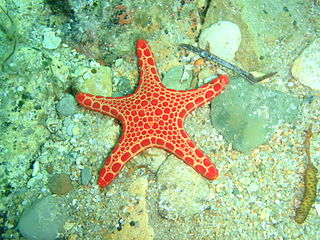
Goniasteridae constitute the largest family of sea stars, included in the order Valvatida. They are mostly deep-dwelling species, but the family also include several colorful shallow tropical species.
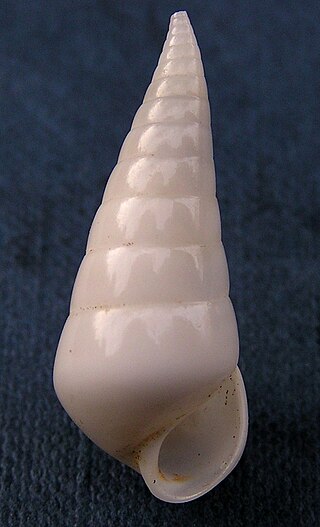
Eulimidae is a family of very small parasitic sea snails, marine gastropod mollusks in the superfamily Vanikoroidea.
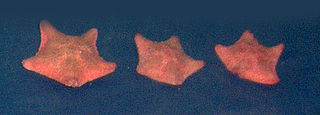
Asterina is a genus of asteroideans in the family Asterinidae.

Semicassis is a genus of medium-sized predatory sea snails, marine gastropod molluscs in the subfamily Cassinae within the family Cassidae, the helmet snails and bonnet snails.

Goniodoris is a genus of sea slugs, specifically dorid nudibranchs, marine gastropod molluscs in the family Goniodorididae.

Linckia multifora is a variously colored starfish in the family Ophidiasteridae that is found in the Indian Ocean and Red Sea. Its common names include the Dalmatian Linckia, mottled Linckia, spotted Linckia, multicolor sea star and multi-pore sea star.
Asexual reproduction in starfish takes place by fission or through autotomy of arms. In fission, the central disc breaks into two pieces and each portion then regenerates the missing parts. In autotomy, an arm is shed with part of the central disc attached, which continues to live independently as a "comet", eventually growing a new set of arms. Fragmentation occurs on star fishes.

Linckia columbiae is a species of starfish in the family Ophidiasteridae. It is found in the East Pacific where it ranges from California (USA) to northwest Peru, including offshore islands such as the Galápagos. Common names include fragile star, Pacific comet sea star and variable sea star.

Fromia is a genus of starfish belonging to the family Goniasteridae.

Thyca crystallina is a species of sea snail, a marine gastropod mollusc in the family Eulimidae. It is one of nine species within the genus Thyca, all of which are parasitic on starfish in the Indo-Pacific Ocean. This species was first described in 1846 by the American conchologist Augustus Addison Gould as Pileopsis crystallina but was later transferred to Thyca.

Phataria unifascialis is a species of starfish in the family Ophidiasteridae. It is sometimes known as the blue seastar or tan starfish, but both these names are also used for other species. It is native to the eastern Pacific Ocean where it ranges from the Gulf of California and Magdalena Bay (Mexico) to northwest Peru, including various eastern Pacific island groups such as the Galápagos. It remains fully active at temperatures down to 17 °C (63 °F), but becomes inactive when it drops to 14 °C (57 °F). It reaches a diameter of about 30 cm (1 ft).

Gomophia is a genus of sea stars.






















